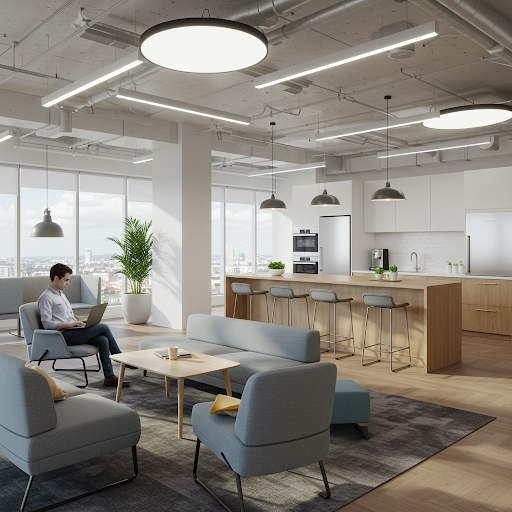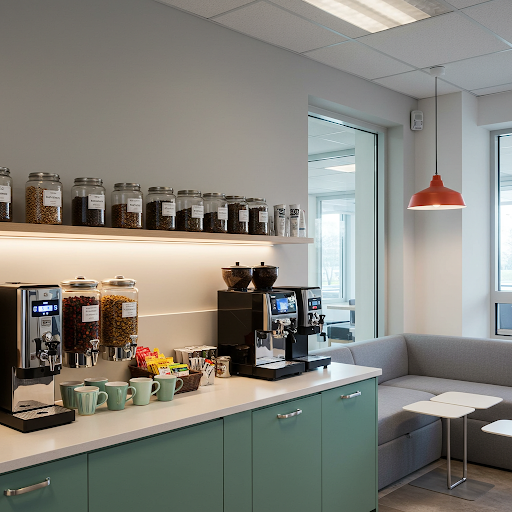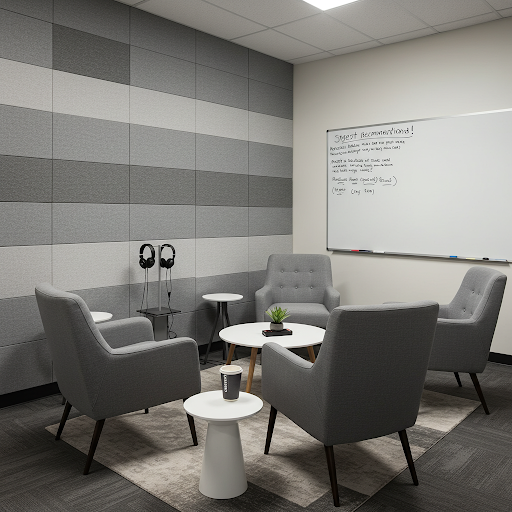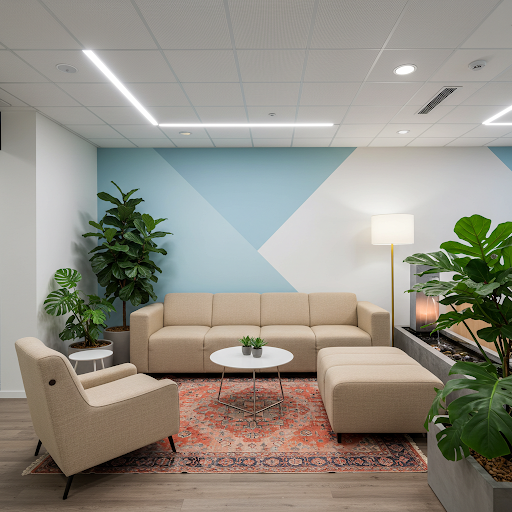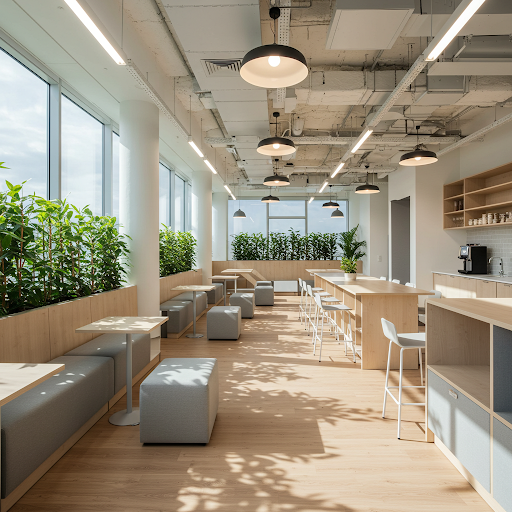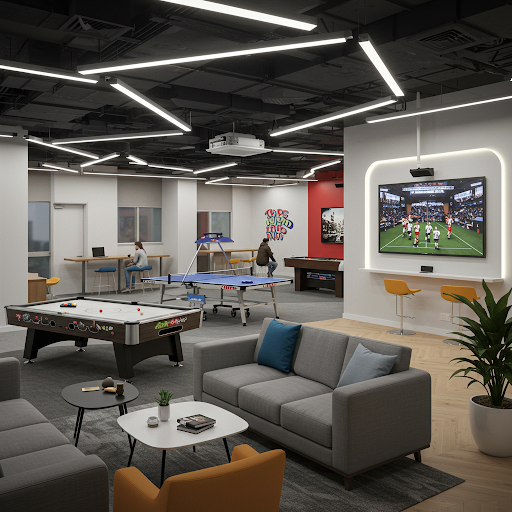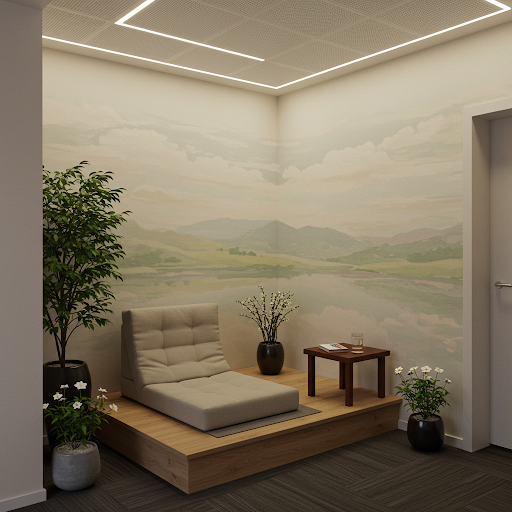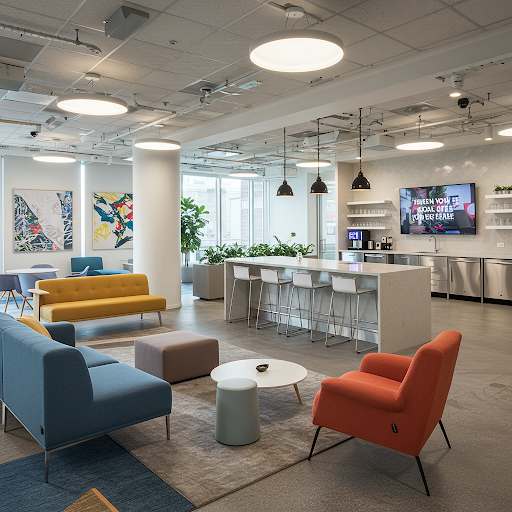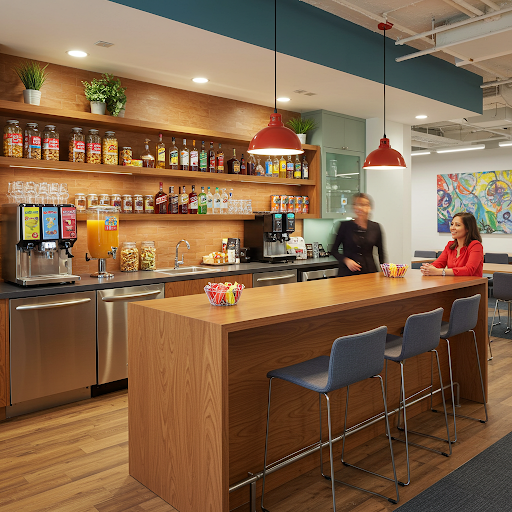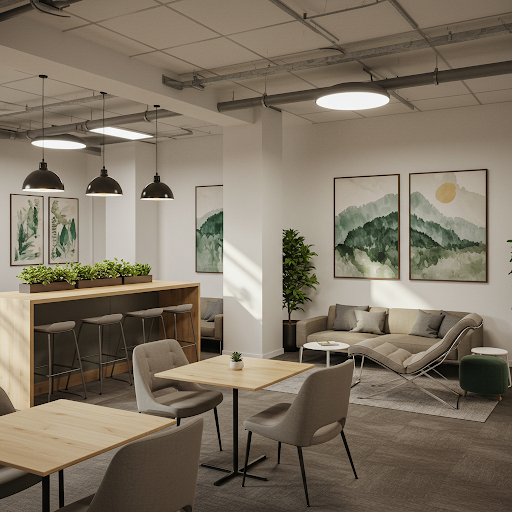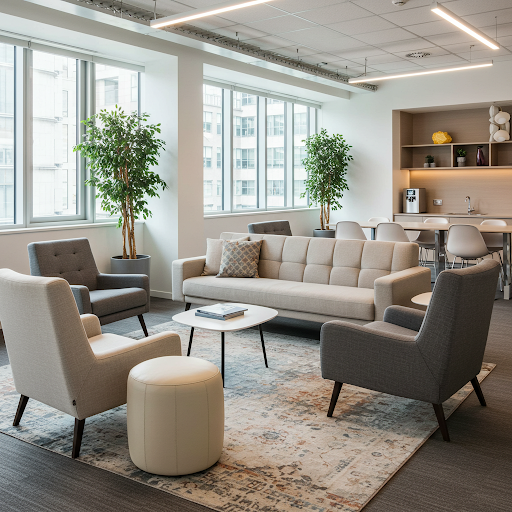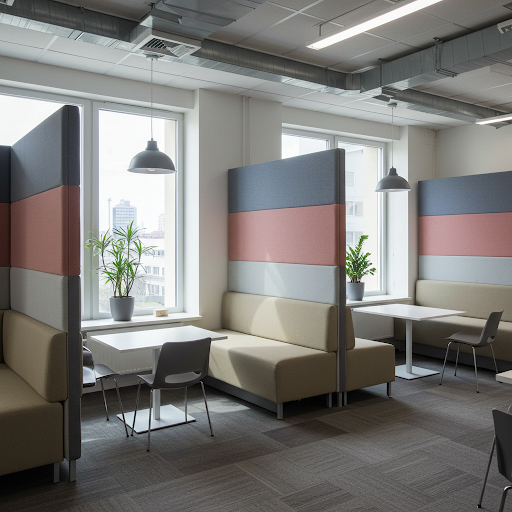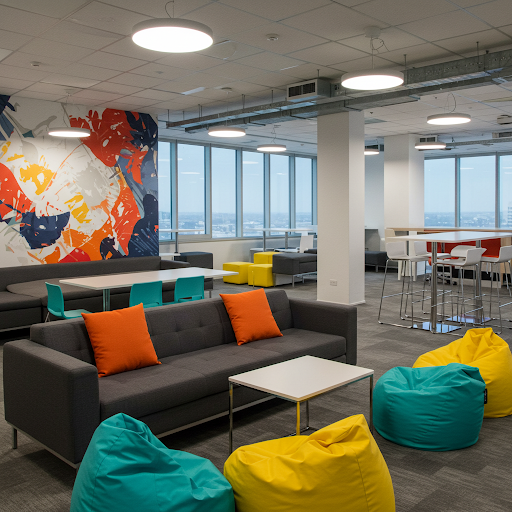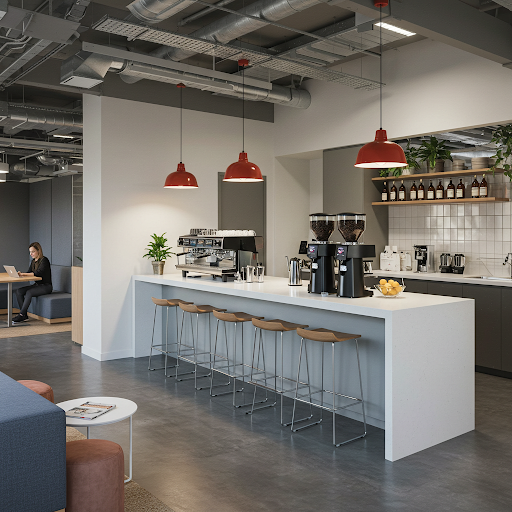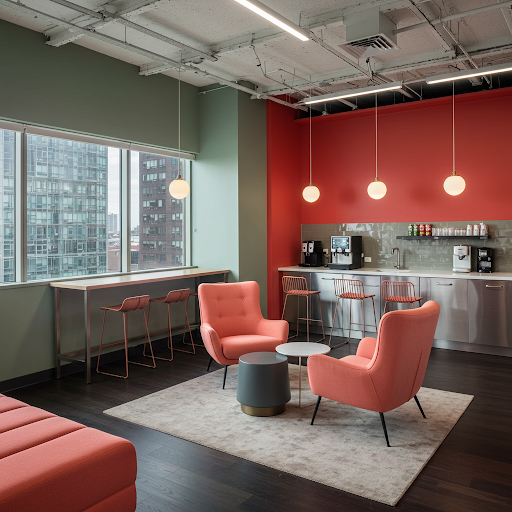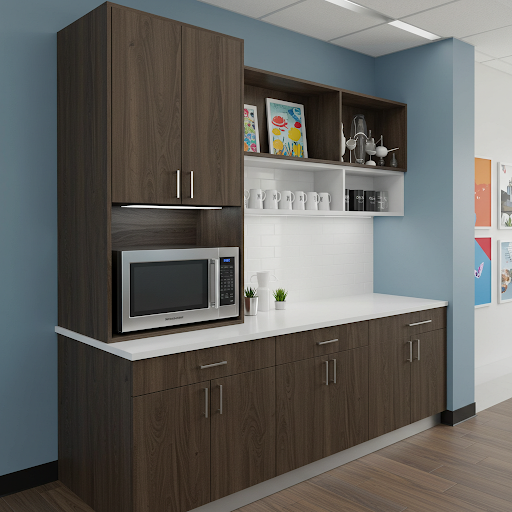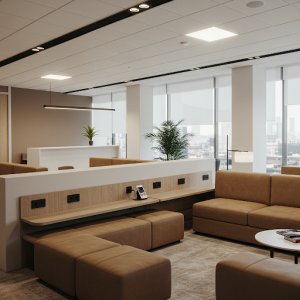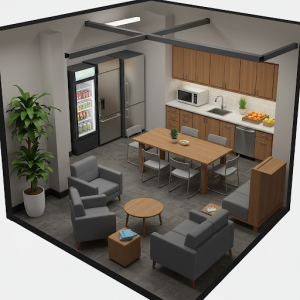Description
Office recreation room ideas
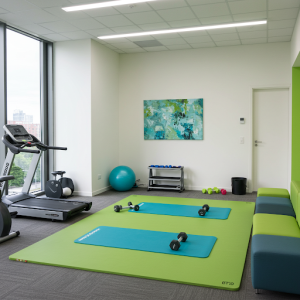
A functional office recreation room, also called office break room, is no longer a luxury, but a way to attract promising employees! Just 5-10 years ago, the typical reaction of a domestic employer to the proposal to set up a recreation area in the office would have looked like this: “Relax at work? What are you talking about! At work, they work!”
Today, young specialists refuse to work 8-10 hours in uncomfortable and “grey” offices. You can’t attract new personnel with just a stable salary and social security fund.
Dining room
Office games and/or cinema recreation room
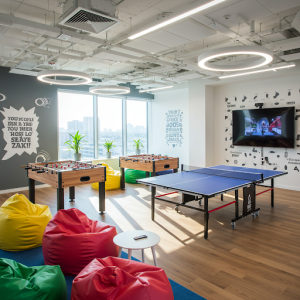
”The Scream Room”
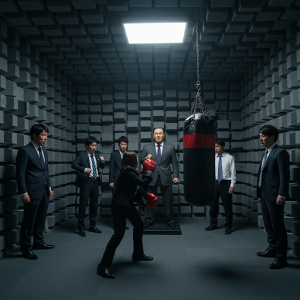
Many Japanese corporations have dark, soundproof rooms where employees go to shout and let off steam. Sometimes they also have an effigy of the boss that can be punched.
Such psychological relief rooms are gradually being introduced in other countries. If you have enough space, you can equip such a room in your office – it will help employees cope with stress.
Lounge area in the office
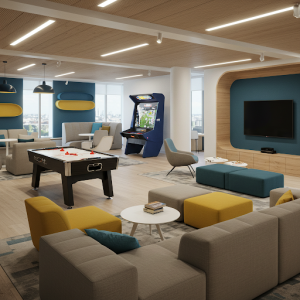
The very idea of office recreation came to Kenyan reality from abroad. Even 5 years ago, the presence of such zones would have shocked Kenyan entrepreneurs. The approach to organizing office space in domestic companies was one-sided: to arrange the entire area for work spaces. Design agencies, who saw the futility of this approach, resorted to trickery – they convinced managers of the importance of arranging a lounge zone with an eye to the fact that this space can be used for work spaces for several employees.
Today the situation has changed dramatically. The offices of large domestic companies are designed with the allocation of comfortable areas for employees to relax. This is already a question of brand prestige.
The reasons for this “warming” are:
Changing the work format

Modern realities are a flexible schedule. Employees can visit the office at a convenient time or not visit at all. The main criteria are meeting deadlines and quality of work. Accordingly, it is not necessary to work non-stop. Many specialties today involve working with a tablet, laptop or mobile phone in a comfortable chair or on a sofa.
Generational change
Young employees are more open to new things, they know what working conditions are welcomed in large international companies. Compromise is not for them. They are in no hurry to sacrifice their comfort for the sake of salary and social security fund.
These factors have fundamentally changed the office ideology. Now the work space is also a comfortable space for rest during breaks.
How to create an office recreation area: design nuances
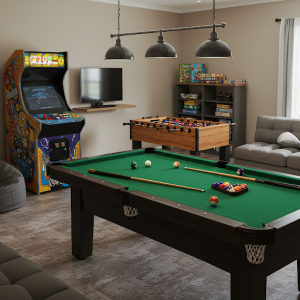
Original projects are developed taking into account:
Number of employees, number of departments
Effective recreation area design hinges on workforce size and departmental needs. Tailored projects consider employee numbers for adequate space and diverse department requirements for varied activities. This ensures the space is both functional and inclusive, fostering a positive work environment.
Specifics of the work of the organization and its branches
Effective office recreation design hinges on organizational specifics. Tailor projects to reflect the company’s work style and branch variations. Understand workflow, stress levels, and employee demographics to create spaces that genuinely support relaxation and rejuvenation, enhancing overall workplace well-being.
Features of the interaction between specialists
Office recreation design hinges on understanding employee interaction. Original projects must reflect how specialists collaborate. This means tailored spaces promoting desired interactions, whether it’s fostering spontaneous collaboration or providing quiet zones for focused work, ultimately enhancing workplace harmony and productivity.
Layout, area of office space
Effective office recreation design hinges on spatial awareness. Tailoring projects to the existing layout and area maximizes functionality. Original designs consider these constraints to create optimal spaces for relaxation and engagement, ensuring the recreation area seamlessly integrates with the overall office environment.
Customer requests
Creating effective recreation areas hinges on understanding client needs. Tailored designs emerge from direct requests, ensuring the space aligns with company culture and employee preferences. This customer-centric approach guarantees the recreation area fulfills its intended purpose, fostering relaxation and engagement.
The development of the project begins with the development of the lounge area concept. The space can be used:
For informal communication between employees and rest during breaks
Lounge area concept drives recreation space design. Prioritizing informal communication and break-time rest, the design focuses on comfort and social interaction. This foundation ensures the space effectively facilitates employee connection and relaxation, shaping the project’s overall direction.
As unassigned workstations.
For example, any specialist with a laptop or tablet can move to the lounge area. Also, employees on a flexible schedule can work in this room when visiting the office, without occupying the work area.
For organizing events

Lounge concept drives project design, enabling versatile use. Beyond relaxation, it transforms into an event space. Adaptability is key; furniture and layout must accommodate conferences, negotiations, and corporate gatherings. The lounge’s design should seamlessly transition from casual to formal settings.
Understanding the concept of the lounge area largely determines its layout, design, choice of furniture and materials.
Considerations when designing an office recreation room
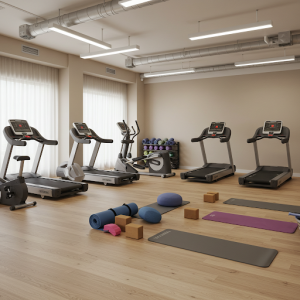 The layout
The layout
Determining the number and type of office recreation areas requires a multi-faceted approach, focusing on the company’s specific needs and culture. Begin by analyzing the company’s demographics, including age ranges, job roles, and typical work patterns, to understand the diverse recreational preferences within the workforce. Conduct employee surveys or focus groups to gather direct feedback on desired activities and preferred relaxation spaces.
Consider the company’s culture and values; a collaborative environment might benefit from open, social spaces, while a more focused culture may prioritize quiet relaxation zones. Assess the available office space and budget, factoring in the potential return on investment in terms of employee morale and productivity. Evaluate the type of work performed; highly stressful jobs may require more relaxation-focused areas, while creative roles might benefit from spaces that encourage brainstorming and collaboration.
Finally, consider incorporating a mix of recreational options, such as active areas for games, quiet zones for relaxation, and social spaces for informal gatherings, to cater to a wide range of employee preferences.
Functionality
The office recreation room’s versatility extends beyond simple relaxation. It becomes a flexible workspace that accommodates breaks, focuses on tablet/laptop work, and collaborative team or informal meetings. The key lies in understanding the room’s intended purpose.
If it’s a multi-functional space, furniture should be adaptable: comfortable seating for breaks, tables for work sessions, and modular arrangements for meetings. Interior elements, like lighting and soundproofing, must support diverse activities. A clear concept, derived from employee needs and company culture, dictates the optimal furniture and design choices, ensuring the space maximizes its potential.
Compatibility with other functional areas
The proximity of the lounge area to the kitchen or the boss’s office is not the best option, but organizing a place to relax next to a coffee point will be a good solution.
Difference from work areas
Interior design, furniture, and lighting should not remind employees of workplaces. This will make it easier for people to switch off and relax.
Soundproofing
To create a comfortable environment, you need to protect the room from noise as much as possible. To do this, use furniture, panels, partitions with good soundproofing properties.
How much room should be allocated for office recreation?
The question is interesting. The number of such zones in one office can be determined after studying a number of factors: the configuration of the premises, the specifics of the work of employees/departments. The rest area can be organized next to several work zones. Then it will be more convenient for specialists to meet for communication, rest during breaks.
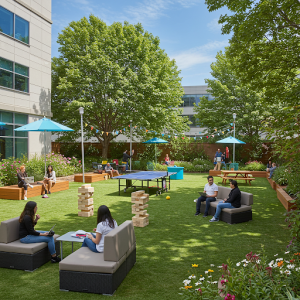 You can design one large zone or several small ones. There are several recommendations, let’s look at them in more detail:
You can design one large zone or several small ones. There are several recommendations, let’s look at them in more detail:
Away from the manager’s office
Placing the recreation zone away from the manager’s office fosters a sense of uninhibited relaxation. The psychological impact is significant; employees may feel scrutinized or judged while unwinding in close proximity to authority figures. This discomfort can hinder genuine rest and rejuvenation, defeating the room’s purpose. By creating a physical separation, a more relaxed and comfortable atmosphere is established. Employees are free to de-stress without feeling observed, promoting a healthier work-life balance and boosting overall morale. This spatial consideration acknowledges the importance of psychological comfort in the workplace.
Next to the coffee point
Coffee breaks between work processes facilitate relaxed communication between employees.
Away from the dining room and kitchen
If the office has a dining room and a kitchen, it is advisable to place the lounge area away from these rooms. The rule is simple: separate food and rest. In the area, you can install a water cooler, a coffee machine, a small table with fruits, cookies, and nuts.
Near work areas
The rest area should be located near the workplaces, so that it is easier for employees to get there. For example, an open space can be divided into equal parts by such a zone. It will be more comfortable for employees of different departments to move to the rest area, which is located in the center of the office, and not in its remote part.
Office recreation room lighting
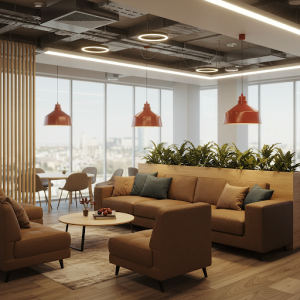
Artificial lighting is made warmer (around 3000 K) and less intense (250-300 lux). Such light promotes relaxation. Usually lounge spaces are equipped with lamps with matte shades. The devices can be placed on the walls or ceiling. An interesting solution is to use floor lamps, original chandeliers that create an informal atmosphere.
Artificial lighting can be combined with natural daylight. When designing a lounge area, it is advisable to consider several lighting design options.
Lounge area soundproofing
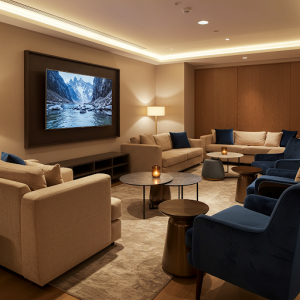
To suppress noise in the lounge area, which is part of the office recreation room and general office spaces, soundproof partitions or curtains are usually used. Also in this room, upholstered furniture, wall and ceiling panels, plants are placed – these interior items absorb sound well. It will not be possible to completely get rid of noise, but in this way you can reduce the level of background noise.
For telephone and video communication, booths with good sound insulation can be placed in the rest area. In them, employees can negotiate with clients/partners without disturbing others.
Officer recreation room furniture
The main rule is maximum difference from the office furniture installed in the work areas. This will make it easier for employees to reorganize, relax and have a good time during the break. Quality rest increases productivity.
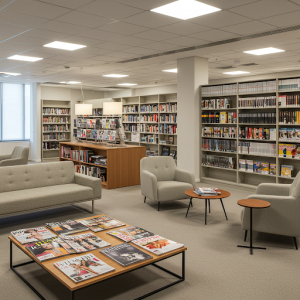 Let’s look at general recommendations for choosing furniture:
Let’s look at general recommendations for choosing furniture:
Set “Minimum”
Upholstered furniture – sofas, poufs, armchairs, coffee tables with integrated sockets. You can place hammocks and swings – such original solutions will appeal to people of any age.
Team meeting set
The recreation area is often used for brainstorming, informal communication, and team games. In this case, furniture with good soundproofing characteristics is placed there. For example, chairs and sofas with high backs and sides, modular tables, mobile partitions. In addition to absorbing noise, such furniture allows you to quickly adjust the area to the format of the event.


